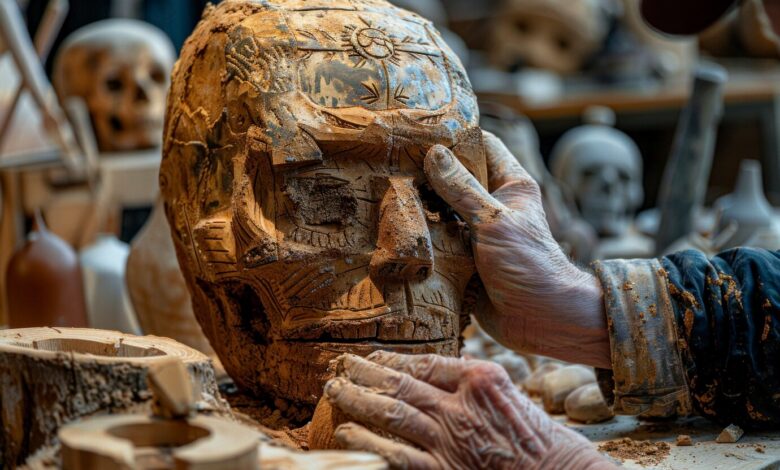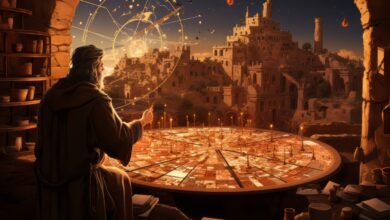Ancient Artz: A Timeless Journey Through the Artistic Expressions of Early Civilizations

Art is one of the maximum profound reflections of human tradition, presenting insights into the ideals, values, and every day lives of humans for the duration of records. When we talk about “Ancient Artz: A Timeless Journey Through the Artistic Expressions of Early Civilizations,” we are diving into a wealthy tapestry of creative expression that spans thousands of years, encompassing various civilizations, techniques, and forms. From the enigmatic cave artwork of early humans to the difficult sculptures of the classical world, ancient art continues to captivate and inspire us nowadays.
The Origins of Ancient Artz
The tale of historic art starts with the earliest humans, who used their creativity to communicate, file, and make experience of the world round them. The oldest regarded art paperwork are cave artwork, together with those determined inside the Lascaux Caves in France and the Altamira Caves in Spain, which date returned over 30,000 years. These early artists used natural pigments to depict animals, searching scenes, and abstract patterns, providing a glimpse into the lives and ideals of prehistoric groups.
These early artworks had been not created simply for adornment; they served as powerful gear for communique and formality. In many instances, they are believed to have had non secular or non secular importance, perhaps utilized in ceremonies to make sure successful hunts or to hook up with the religious international. These historical artists have been no longer just creators but storytellers, the use of their craft to pass down information and traditions via generations.
Ancient Egyptian Art: Symbolism and the Afterlife

One of the most iconic varieties of historic artwork comes from the civilization of Egypt. Egyptian artwork is characterized through its one-of-a-kind style, which remained remarkably regular for over 3,000 years. The primary recognition of Egyptian art turned into at the afterlife, with tomb artwork, sculptures, and hieroglyphics designed to make certain a safe passage to the subsequent world.
Egyptian artists used a symbolic technique, with each element of their work carrying particular meanings. For example, the size of a determine frequently indicated its importance, with gods and pharaohs depicted as large than ordinary people. Colors had been also symbolic; gold represented the divine and eternal, while inexperienced become associated with fertility and rebirth.
The artwork of historic Egypt became deeply intertwined with religion and the culture’s obsession with immortality. The grand pyramids, elaborate tombs, and difficult statues all served to glorify the gods and immortalize the deceased, ensuring their memory and soul could undergo all the time.
The Classical Beauty of Greek and Roman Art
The historical Greeks and Romans took artwork to new heights, developing techniques and styles that maintain to persuade Western artwork to this day. Greek artwork is renowned for its emphasis on realism, percentage, and beauty. The Greeks sought to symbolize the human frame in its ideal form, as seen in their sculptures of gods, athletes, and heroes. This focus on realism and idealism can be seen in masterpieces just like the Venus de Milo and the Discobolus.
Greek pottery additionally played a crucial role in their inventive legacy, with vases and amphorae depicting scenes from mythology, each day existence, and athletic competitions. These works no longer only served sensible functions but also communicated stories and ethical instructions, maintaining the tradition’s values and beliefs for future generations.
Roman art, closely stimulated by way of Greek traditions, multiplied on those topics while incorporating factors of practicality and propaganda. The Romans used art to celebrate their navy victories, honor their leaders, and decorate public areas. The grandeur of Roman architecture, with its huge systems just like the Colosseum and aqueducts, showcased the empire’s energy and engineering prowess.
The Spiritual Depth of Indian and Chinese Art
Moving eastward, the historical artwork of India and China reveals a deep connection to spirituality and philosophy. Indian art, closely encouraged by means of Hinduism and Buddhism, is rich in symbolism and narrative. Temples and sculptures frequently depict scenes from sacred texts like the Mahabharata and Ramayana, as well as representations of gods, goddesses, and the Buddha.
The art of India is characterised by using its complicated details and colourful hues, with an emphasis on conveying spiritual teachings and the divine nature of the universe. The sculptures of the Gupta length, as an example, are celebrated for his or her grace and serenity, reflecting the spiritual beliefs of the time.
In China, ancient art turned into deeply linked to Confucian, Taoist, and Buddhist philosophies. Chinese artists mastered numerous paperwork, along with calligraphy, portray, sculpture, and pottery. The Terracotta Army, a big collection of existence-sized clay soldiers buried with the first Emperor of China, Qin Shi Huang, is one of the maximum marvelous examples of historical Chinese art. This awesome feat of workmanship now not best demonstrates the artistic ability of the time however also reflects the cultural importance of honoring the lifeless.
The Enduring Legacy of Ancient Artz
Ancient artwork isn’t just a window into the past; it is a living legacy that maintains to influence cutting-edge artists and cultures around the world. The strategies, patterns, and topics developed via historical artists were handed down through the centuries, inspiring limitless generations.
In present day art, we see the echoes of historical traditions in the whole thing from sculpture to architecture, fashion, and virtual artwork. Modern artists regularly draw upon historic motifs and techniques, blending them with new thoughts to create works that resonate with nowadays’s audiences at the same time as paying homage to the past.
The have a look at of historic artz additionally provides valuable insights into the records and development of human civilization. By examining these works, we gain a deeper expertise of the cultural, social, and religious dynamics that fashioned our ancestors’ lives.
Conclusion: Ancient Artz: A Timeless Journey Through the Artistic Expressions of Early Civilizations
The Timeless Appeal of Ancient Artz
Ancient artz represents the pinnacle of early human creativity, presenting a timeless connection to the cultures and ideals of the past. Whether it’s the symbolic beauty of Egyptian tomb paintings, the classical elegance of Greek sculpture, or the spiritual depth of Indian and Chinese artwork, those historic works continue to captivate and encourage us.
As we discover and appreciate the artwork of historic civilizations, we no longer best have fun their creative achievements but additionally recognize the long-lasting power of art to transcend time and join us to the shared human experience. The legacy of historical artz lives on, reminding us of the creativity, resilience, and spirit of folks that came earlier than us.



